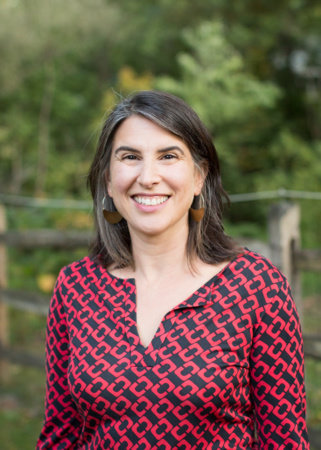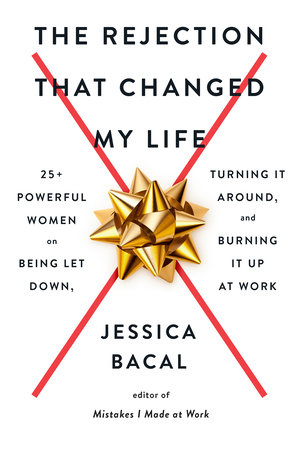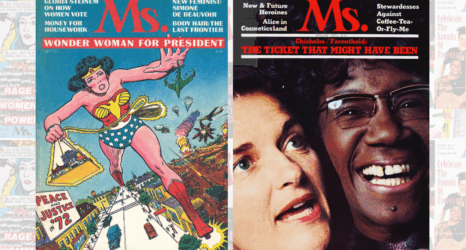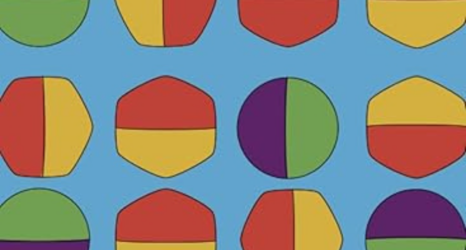Jessica Bacal’s The Rejection That Changed My Life shows how women overcome rejection and learn from it.

“We live with the myth that our careers should be linear, that messing up is like landing on the wrong spot in Chutes and Ladders: One god-awful day and we’ll be sent plunging downward. In reality, our career paths can zigzag and bump along—it doesn’t mean we’ve gone down a chute,” writes Jessica Bacal, the author of The Rejection That Changed My Life: Turning It Around and Burning it Up At Work.
Bacal, the director of Reflective and Integrative Practices and of the Narratives Project at Smith College, was inspired to write this book after a major professional rejection she encountered at Smith. “It shook the whole foundation of my professional identity to not get [the job],” Bacal told Ms. That’s when she realized that even though everyone deals with rejection, nobody talks about it.
“I wanted to encourage people to think about their lives and themselves in a more holistic way,” says Bacal. She interviewed 29 women from various fields—activists, chefs, journalists, comedians, among others—about a rejection that felt like a “touchstone” in their life. Some noteworthy interviewees include New York Times bestselling author Angela Duckworth, reproductive justice activist Loretta J. Ross, and noted author and speaker Ana Homayoun.
Bacal only interviewed women because she “didn’t really feel like [she] needed to talk to men.” For Bacal, women’s stories of rejection were the only stories that had encouraged her when she was struggling with rejection. Women’s stories deal with more than rejection—they often have to do with underlying discrimination, including sexism and racism.
“Women are not supposed to be self-promoting or too assertive or angry. We’re supposed to look for the point of connection, for approval. So I wanted to hear about what happened to women when they hadn’t gotten it, when they had been outright rejected.”
Bacal states that the tricky thing about writing a book for women dealing with rejection is that there’s “a danger of people thinking that I am offering advice for women to ‘fix’ themselves or not feel bad about themselves.” Instead, Bacal speaks of rejection as a tool for female growth and empowerment.
However, how can one feel empowered when their identity is constantly ridiculed? Ana Homayoun—the founder of Green Ivy Educational Consulting—describes how, shortly after 9/11, she worked in a bank in Palo Alto, California. She recounts the racist comments that her co-workers made—often said in front of her, without realizing that she is from the Middle East.
Homayoun felt stuck in her work environment, afraid that if she complained to management her concerns would be dismissed, if not outright ignored. Homayoun was later laid off. However, that’s when she realized what her passion in life was: helping teenagers.
“I believe that when you’re a person of color, especially a woman of color, you become vulnerable when you base your sense of approval on the outside world—on a job title at a fancy firm for example—instead of designing your own blueprint. My life’s work is about helping kids—and adults—create their own blueprints for success rather than borrowing someone else’s” states Homayoun.
The last section of Bacal’s book is called the “Rejection Workbook.” This workbook is perhaps the most notable section of Bacal’s book, guiding readers to “access the power of [their] own story.” Each exercise takes the stories and tips of people interviewed in the book and shows how to put them into everyday practice. Some of the many exercise topics include practicing self-compassion, reflecting on purpose, and receiving ten “Nos” to take the sting out of rejections.
Bacal highlights the story of Emily Winter, who worked toward 100 rejections and Caitlin Kirby, who wore a skirt out of rejection letters when she was defending her dissertation. In doing so, Bacal demonstrates that ten rejections is a meager number to shoot for and that one should find a sense of comfort in working through rejections.
“When I think about grit, it isn’t about being able to blow off a rejection or failure in the moment; it isn’t about not crying. You can cry all you want. The question is, do you get up again?” explains Angela Duckworth.
The Rejection That Changed My Life is an essential read for anyone currently struggling with rejection or anyone wanting to know how to learn from rejection. During COVID, many women have lost their jobs or had to leave the workforce to care for their children and are now facing re-entry. For these and all women, Bacal’s book provides important tools for how to grow stronger in the face of rejection. The stories in her book show that even successful women experience rejection and discrimination in the workplace. The book imparts the the skills and outlook necessary to not only overcome rejection but to feel empowered doing so.
You may also like:






